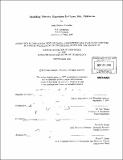| dc.contributor.advisor | M. Nafi Toksöz and Daniel R. Burns. | en_US |
| dc.contributor.author | Alsaadan, Sami Ibrahim | en_US |
| dc.contributor.other | Massachusetts Institute of Technology. Dept. of Earth, Atmospheric, and Planetary Sciences. | en_US |
| dc.coverage.spatial | n-us-ok | en_US |
| dc.date.accessioned | 2011-04-25T16:06:43Z | |
| dc.date.available | 2011-04-25T16:06:43Z | |
| dc.date.copyright | 2010 | en_US |
| dc.date.issued | 2010 | en_US |
| dc.identifier.uri | http://hdl.handle.net/1721.1/62484 | |
| dc.description | Thesis (S.M.)--Massachusetts Institute of Technology, Dept. of Earth, Atmospheric, and Planetary Sciences, 2010. | en_US |
| dc.description | Cataloged from PDF version of thesis. | en_US |
| dc.description | Includes bibliographical references (p. 73-76). | en_US |
| dc.description.abstract | Discrepancies in interval velocities estimated from vertical well measurements made with different source central frequencies at Gypsy site could be primarily explained in terms of intrinsic attenuation. Four intervals were chosen for this study based on varying rock properties. The first interval is predominantly shale, second interval is mostly sandstone, and the third interval is made up of shale and sandstone. The fourth interval is the second and third intervals combined. The data used are acquired from three seismic sources; Full Wave Sonic (FWS), Bender log, and Vertical Seismic Profile (VSP) with estimated central frequencies 10kHz, 1kHz, and 100Hz, respectively. The modeling was done using the Discrete Wavenumber (DWN) method and the Logarithmic Dispersion Relation (LDR) to calculate a constant Quality Factor (Q) that best explains the observed velocity dispersion for each of the intervals of interest. The elastic scattering component of the dispersion is negligible. Intrinsic quality factors of 54,35,28, and 30 best explain the field data for first, second, third, and fourth intervals, respectively. The identification and subsequent modeling of velocity dispersion and its components provide key information for integrated reservoir characterization and better enable the prediction of the seismic response at different frequencies. | en_US |
| dc.description.statementofresponsibility | by Sami Ibrahim Alsaadan. | en_US |
| dc.format.extent | 91 p. | en_US |
| dc.language.iso | eng | en_US |
| dc.publisher | Massachusetts Institute of Technology | en_US |
| dc.rights | M.I.T. theses are protected by
copyright. They may be viewed from this source for any purpose, but
reproduction or distribution in any format is prohibited without written
permission. See provided URL for inquiries about permission. | en_US |
| dc.rights.uri | http://dspace.mit.edu/handle/1721.1/7582 | en_US |
| dc.subject | Earth, Atmospheric, and Planetary Sciences. | en_US |
| dc.title | Modeling velocity dispersion In Gypsy site, Oklahoma | en_US |
| dc.type | Thesis | en_US |
| dc.description.degree | S.M. | en_US |
| dc.contributor.department | Massachusetts Institute of Technology. Department of Earth, Atmospheric, and Planetary Sciences | |
| dc.identifier.oclc | 712066297 | en_US |
